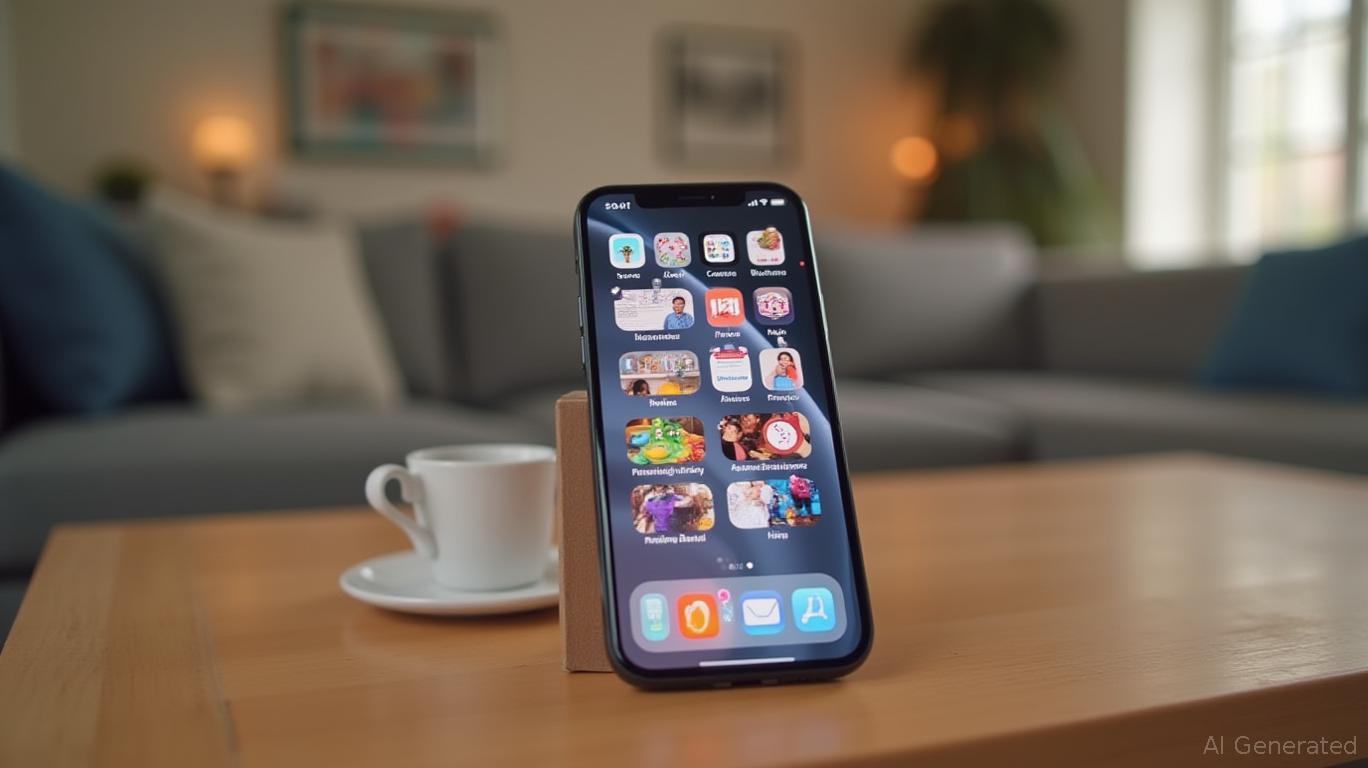Apple's AI Developer Ecosystem: A Blueprint for Dominance in the Age of Privacy-First AI
Apple's recent WWDC 2025 announcements mark a pivotal shift in its strategy to cement its position as the unrivaled leader in AI-driven ecosystems. By opening its on-device foundation models to developers, Apple is not merely adding features—it is fortifying its platform's stickiness, accelerating the growth of an AI-powered app economy, and carving out a moat against cloud-centric rivals like Google and OpenAI. This move underscores a masterful blend of innovation, privacy, and ecosystem control, positioning Apple to capture outsized gains in the AI arms race.

The Platform Stickiness Play: Locking in Developers and Users
Apple's Foundation Models framework lowers the barrier for developers to integrate AI capabilities into apps using just three lines of Swift code. This democratizes access to advanced AI tools, incentivizing developers to prioritize Apple's ecosystem. The result? A self-reinforcing loop where app developers remain loyal to Apple's tools, users benefit from richer experiences, and third-party innovation further entrenches Apple's platforms (iOS, macOS, watchOS) as the go-to for seamless, privacy-focused AI applications.
Consider the examples cited: educational apps generating personalized quizzes or outdoor apps enabling offline natural language search. These features aren't just incremental upgrades—they represent a new class of apps that are uniquely tied to Apple's hardware-software-AI stack. Developers who build for Apple's ecosystem now gain access to a “secret weapon” (the on-device foundation model) that competitors like Android or cloud APIs cannot match. This exclusivity will likely accelerate the migration of critical apps away from platforms perceived as less secure or less user-centric.
Privacy-Centric AI: The Ultimate Competitive Moat
While Google and OpenAI rely on centralized cloud models that require data to be sent to servers, Apple's on-device processing ensures user data never leaves the device. The addition of Private Cloud Compute extends this privacy to cloud tasks, maintaining Apple's “privacy by design” ethos. Third-party verification of Apple's privacy claims further solidifies trust, a critical advantage as consumers increasingly demand control over their data.
This approach isn't just ethical—it's a strategic masterstroke. Users and enterprises prioritizing security (e.g., healthcare, finance, government) will favor Apple's ecosystem for mission-critical AI applications. The Live Translation and Workout Buddy features, running entirely on-device, exemplify how Apple can corner markets where privacy is non-negotiable.
Apple's services revenue has grown at a CAGR of ~12% over the past five years. With AI now enabling new monetizable features (e.g., premium subscriptions for advanced translation, personalized fitness coaching), this trajectory could accelerate. Analysts estimate AI-driven services could add $10–15 billion annually to Apple's top line by 2027—a significant uplift from its current $78 billion in services revenue.
The AI-App Economy: A Gold Mine for Apple's Wallet
The expansion of AI tools will birth a new class of apps and services, from AI-generated content platforms to productivity suites that learn user habits. Apple's Shortcuts with Intelligent Actions and Image Playground integrations highlight how developers can now create generative AI experiences without requiring users to leave Apple's ecosystem. This fosters a “closed-loop” economy where users remain within Apple's ecosystem for content creation, collaboration, and consumption.
The creative tools segment is particularly ripe for monetization. Imagine a Genmoji Pro subscription offering advanced customization, or Image Playground Premium with access to exclusive artistic styles. Apple's 15–30% commission on app purchases and subscriptions means even modest adoption of these services could flow directly to its bottom line.
Competing with Cloud Giants: A Tale of Two Philosophies
Google and OpenAI have bet big on cloud-based AI, leveraging vast data troves to train models. Apple's approach is the inverse: prioritize privacy and on-device computation, minimizing data exposure. This isn't just a philosophical difference—it's a strategic choice to dominate markets where users or enterprises refuse to surrender control of their data.
Apple's stock has underperformed Alphabet in recent years, but this may reverse as the market prices in the long-term value of its privacy-first AI strategy. Investors should note that Apple's ecosystem control (over 1.8 billion active devices) gives it a massive distribution advantage. By contrast, cloud AI companies must rely on third-party integrations, making them vulnerable to fragmentation and regulatory scrutiny.
Risks and Considerations
Hardware constraints remain a hurdle. The new AI features are limited to devices like the iPhone 16 and M1/M2 Macs, potentially sidelining older hardware owners. However, this also creates an incentive for users to upgrade—a tailwind for Apple's hardware sales. Additionally, global regulatory challenges around AI could impact adoption, though Apple's privacy-centric approach may position it favorably under emerging regulations.
Investment Thesis: Long-Term Upside in Apple's AI Future
Apple's AI ecosystem expansion is a transformative play that strengthens its core competitive advantages while unlocking new revenue streams. The privacy-centric AI moat, developer lock-in, and potential for AI-powered services monetization create a compelling narrative for long-term investors.
Buy Apple if:
- You believe privacy will become a dominant consumer and enterprise priority.
- You see AI as a tool to deepen platform stickiness, not just a standalone feature.
- You're bullish on Apple's ability to command premium pricing for ecosystem-enhancing services.
Target Price: Analyst consensus suggests Apple's stock could reach $250–$280 within two years, driven by services growth and hardware upgrades. Long-term investors should consider dollar-cost averaging into dips, with a horizon of 3–5 years to fully realize AI's impact.
In conclusion, Apple's AI ecosystem isn't just an update—it's a declaration of intent to dominate the next era of computing. For investors, this is a bet on the power of a closed-loop, privacy-first AI ecosystem in an increasingly data-conscious world. The upside? It's as limitless as the imagination of the developers now armed with Apple's tools.

Comments
No comments yet